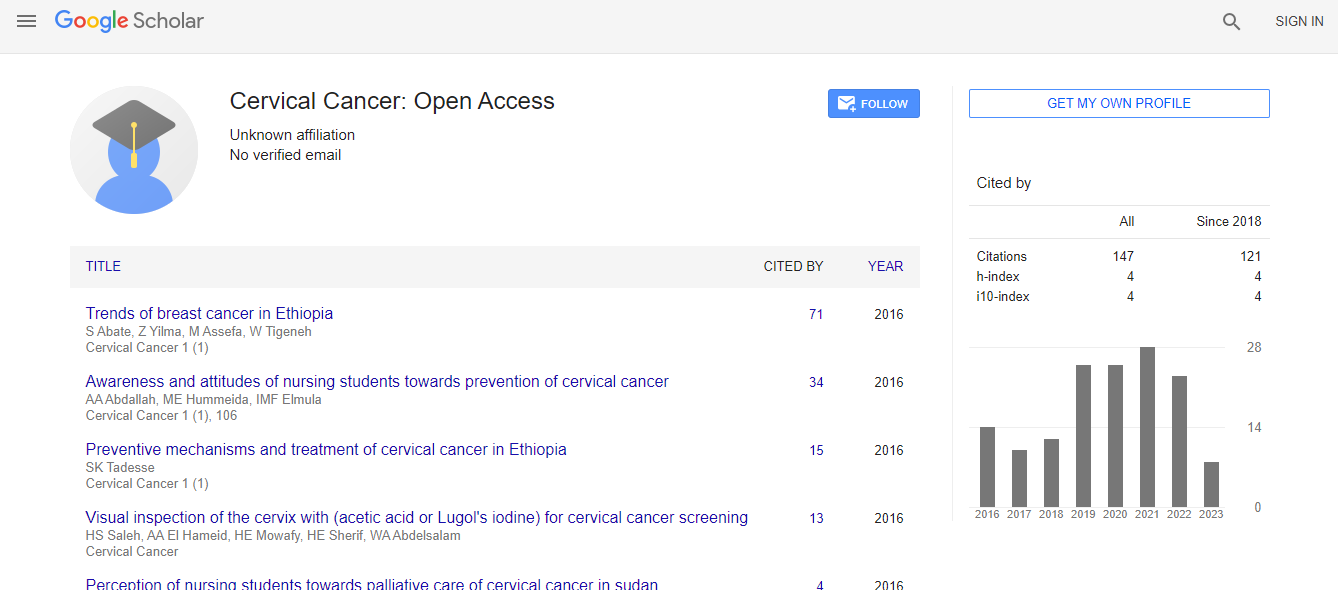Research Article
Preventive Mechanisms and Treatment of Cervical Cancer in Ethiopia
Sara Kebede Tadesse*
Center for Gender Studies, Addis Ababa University, Ethiopia
- *Corresponding Author:
- Sara Kebede Tadesse
M.Phil, Masters in Gender Studies
Center for Gender Studies, Addis Ababa University, Ethiopia
Tel: 251911-81-00-26
E-mail: sarinakebede@gmail.com
Received date: October 09, 2015; Accepted date: November 02, 2015; Published date: November 09, 2015
Citation: Tadesse SK (2015) Preventive Mechanisms and Treatment of Cervical Cancer in Ethiopia. Cervical Cancer 1:101. doi:10.4172/2475-3173.1000101
Copyright: © 2015 Tadesse SK. This is an open-access article distributed under the terms of the Creative Commons Attribution License, which permits unrestricted use, distribution, and reproduction in any medium, provided the original author and source are credited.
Abstract
Background: Cervical cancer is the second most common cancer in women globally and a leading cause of death in developing countries especially Sub-Saharan Africa. Ethiopia has also been shown to share this high incidence rate of cervical cancer. Since preventive mechanisms are considered as one of the key elements in tackling the issue, this study mainly sought to uncover the status of primary preventive mechanisms and tertiary care in Ethiopia.
Methodology: To get an in-depth look at the preventive mechanisms, the study mainly employed a qualitative design. A total of 13 key informant interviews were conducted with staff and officials of relevant institutions. In addition, 10 interviews were held with cervical cancer patients that were attending care in Tikur Anbesa Hospital. A quantitative design has also been implemented in which 198 patients were surveyed.
Results: The study found that due to the inefficient attention paid to cervical cancer, prevention mechanisms and treatment were found to be largely inadequate and underdeveloped. The lack of proper data and other competing health care needs have been stated as the main reason behind the lack of attention paid to cervical cancer. Though steps are currently being taken to expand screening, pre-cancer treatment and invasive cancer treatment sites, the study found all the steps being taken to be in preliminary stages.
Conclusion: The current focus of Ethiopia on secondary prevention mechanism is not adequate to fully address the challenge cervical cancer poses. As an emerging health care issue, cervical cancer has to be prioritized so that the proper resources, policies and strategies can be put in place to address the issue in a comprehensive manner.

 Spanish
Spanish  Chinese
Chinese  Russian
Russian  German
German  French
French  Japanese
Japanese  Portuguese
Portuguese  Hindi
Hindi 